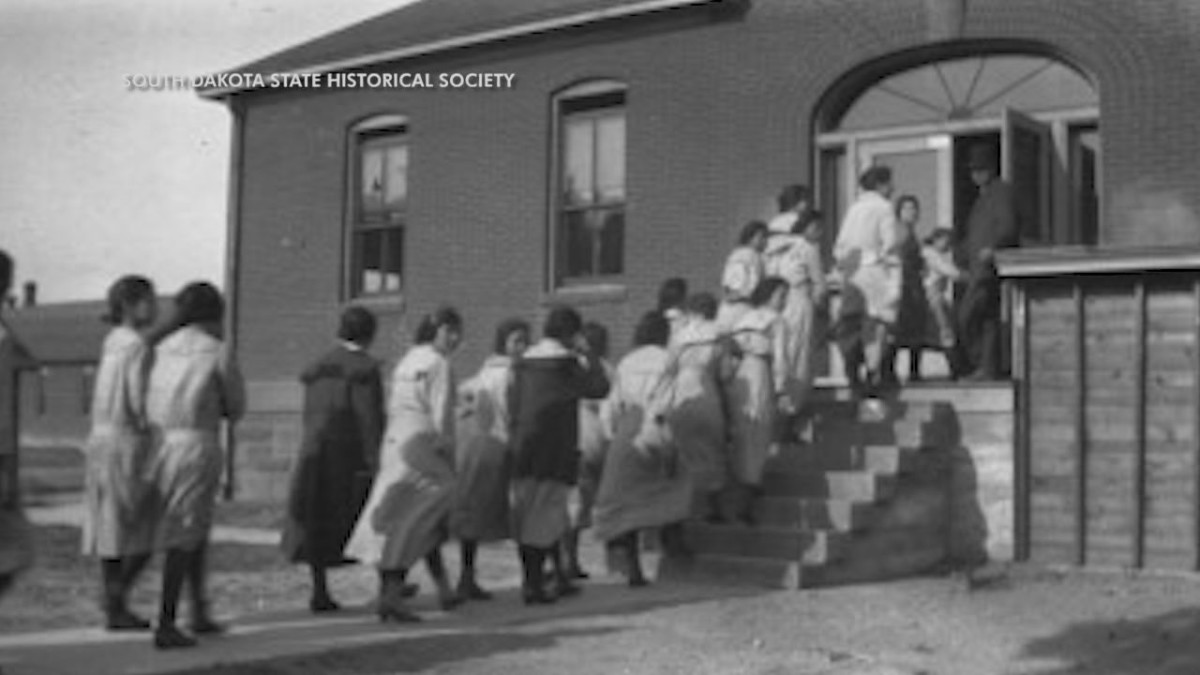Indian School land will gain a memorial

Rapid City Indian School circa 1920’s (Courtesy State Historical Society)
RAPID CITY—Construction is set to begin in October on the first national public memorial built on the site of a former Indian boarding school in Rapid City. The Rapid City Indian Boarding School was located on land near West Middle School on the city’s west side, operating from 1898 to 1933.
Unmarked graves of children who were taken from their homes and brought to the school to live and work have been discovered on the property. The memorial is designed to honor all the children who were brought to the school but especially those who died and were buried without even a mention of their names.
“This is the only place on Earth that these children are going to be remembered, these kids whose names weren’t even recorded, you know, that’s the spirit of the project,” said Wakhanyeza Wichakiksuyapi Executive Director Amy Sazue. “We have to make sure that we do the best by all of them. We really found the best people and we make sure that everybody involved is invested in the story and understands the significance.”
Some of the team members include Sazue, Bobbie Koch, Eric Zimmer, Valeriah Big Eagle, Kibbe Brown, Sandra Fire Lightning, Eirik Asa Heikes, LaFawn Janis, Tatewin Means, Lorraine Nez, Jennifer Read, Beverly Stabber-Warne, Heather Dawn Thompson and Robin Zephier.
“We have the land already protected in a trust,” Sazue said. “The important part was telling the story like we need to tell the story of the kids that lived and died there. But also it opens up that bigger story that this is a boarding school. All of this land here was land that kids worked on. They were forcibly taken from their homes and then forced to work there.”
The memorial will include a larger-than-life statue from South Dakota Hall of Fame member Dale Lamphere, who is most famous for sculpting the Dignity statue just off of I-90 near Chamberlain. There will also be an interpretive site and a visitor center on the property.
“This is a huge step for their committee and the city as a whole,” said Karen Mortimer with the Rapid City’s Human Relations Commission. “They have done a great job with the design and funding. It’s something we will all benefit from.”
More than $2 million in grants have been received for the project. The Mellon Foundation gave $2.1 million which is being held and managed by the committee’s fiscal sponsor, the Black Hills Community Foundation.
“The foundation has been great to work with,” Sazue said. “They have provided a lot of support.”
Other funding for the project has come from Monument Lab, a Philadelphia-based nonprofit group committed to rethinking how stories from history are told.
“I always just say it our shared history,” Sazue said. “Nothing about this is political. It is only about how we need to protect and remember these kids and acknowledge our not-so-positive history together, but that we’re all still here. And so what is our obligation now to tell the story?”
Sazue said nailing down facts of what happened at the school and who was buried on the property have been difficult because of poor record keeping at the time. “There are no records in the first 10 years of school. That first 10 years is probably when there were the most deaths,” she said. “They didn’t know what they were doing. They had 50 kids to one adult. They had 60 kids in one room.”
The memorial has received support from South Dakota tribes and even received an easement for access to the land from Canyon Lake Methodist Church. In addition to serving as a memorial for the children and expanding information about the history of the site, Sazue said the committee will help develop a curriculum that could be taught in schools.
We have a curriculum plan development team that is coming together next Friday,” she said. “And I’ve recruited some Rapid City area teachers and making sure that we mix together a good group of Indigenous people, Lakota people and elders, with this curriculum development, but we are going to build our own curriculum too and hopefully deliver it to the Rapid City schools.”
The Wakhanyeza Wichakiksuyapi is only affiliated with the memorial project. There are two more groups working on projects in the city.
The He Sapa Otipi committee is working to receive almost $9 million in Vision Funds from the Rapid City Council for a community center for the tribal community in the area to use for various projects and programs. There is also a CDC-housing program that will help build housing for tribal members and will one day work with the community center. That program is still seeking original and sustainable funding sources.
(Contact Joe Budd at sales2@nativesunnews.today)
The post Indian School land will gain a memorial first appeared on Native Sun News Today.
